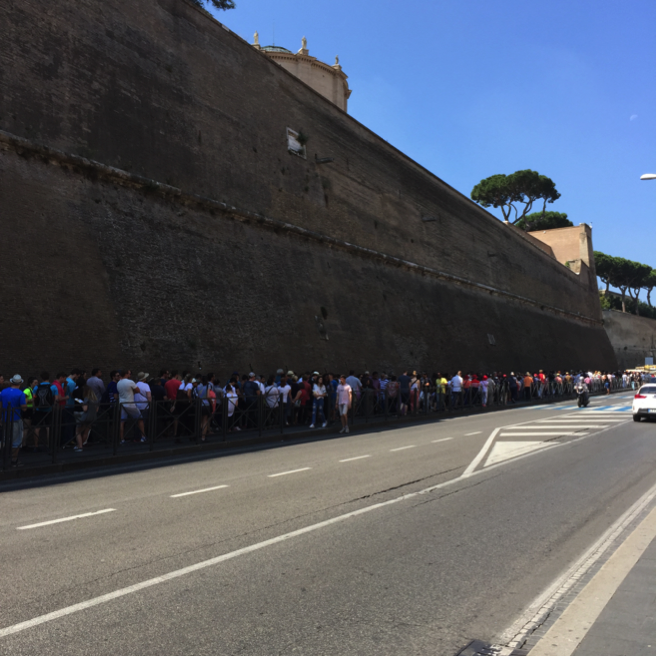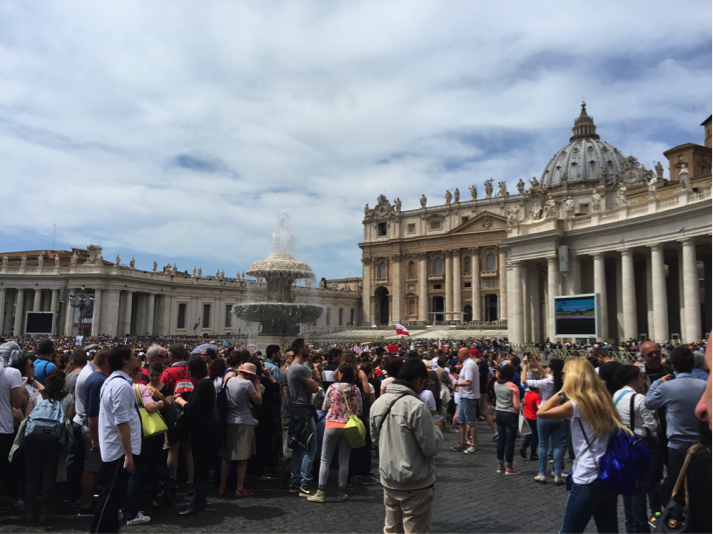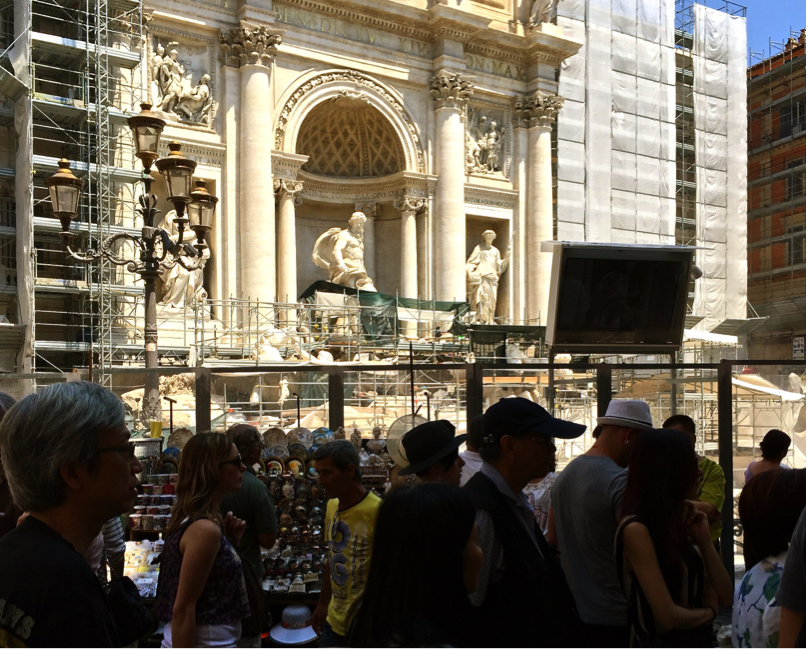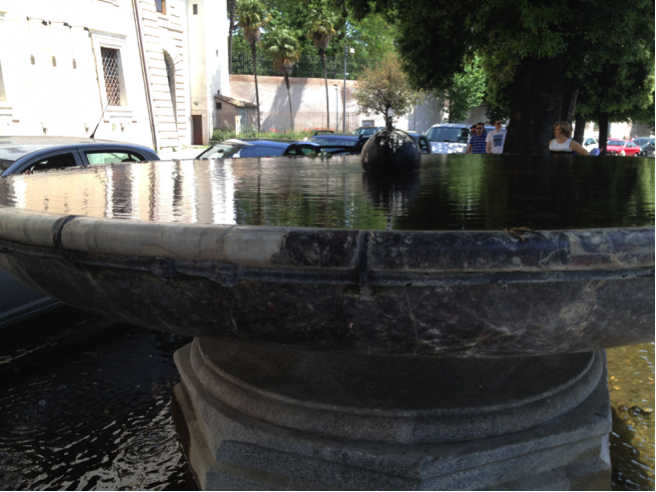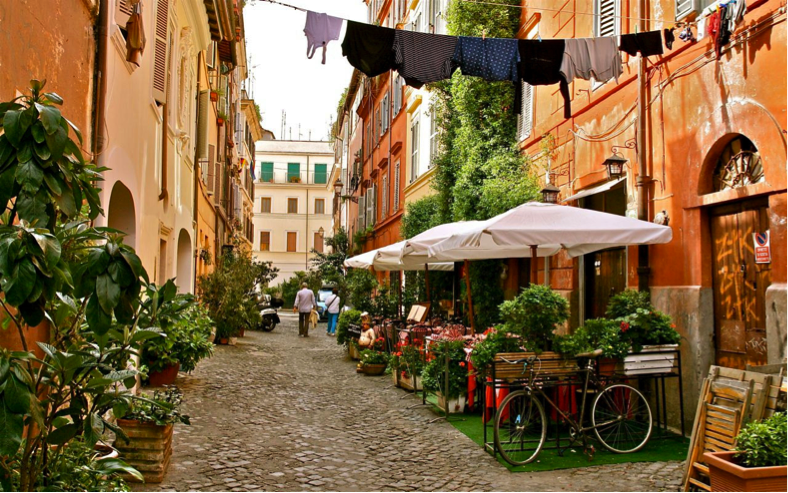Recently I’ve been evangelizing for “slow travel,” a leisurely way to see more of the world by consciously seeing less of it. It sounds contradictory but there’s a reason why it works. Travel provides an extraordinary opportunity to learn about people and cultures and place them in their historical and contemporary contexts. Slow travelers begin by reminding themselves that they can’t see it all. They are students of world history, geography, art, music, architecture, anthropology, languages – what Zorba called the “full catastrophe” (never mind that he was talking about marriage and family; the phrase covers all situations). Here are four famous attractions that you should avoid unless you have ample time in Rome.
#1 St. Peter’s Basilica
It sounds blasphemous to suggest skipping the flagship church in the Catholic empire, but standing in line to visit St. Peter’s is a judgment call considering the wait, the sweat, the sore feet and the pushing and shoving. The midday lines run between two and three hours, and once inside there is no time to linger, appreciate, or pray. Wasn’t that the point originally? The basilica is magnificent, and it is not to be missed, but consider viewing it from a distance. The beauty of its interior detail notwithstanding, I guarantee the experience will be much more satisfying if done at a distance. I was lucky enough to visit before there were lines and before Michelangelo’s Pieta’ was attacked by a lunatic with a hammer. That was a long time ago. The world’s population has doubled since then and they’re all standing in line in St. Peter’s square as I write this on a Thursday afternoon in 2015. By all means take a good look at the exterior but skip the cattle call for the interior tour.
The best and most satisfying time to see view the basilica is just before or after sunset. There will always be people in the square, but there is something special about seeing the basilica’s luminous spirituality when the architecture dominates and human interference is at a minimum. One night, after dinner with friends, we strolled around the square after dark. Michelangelo’s dome dominated the night sky. It was a different experience than fighting the crowds that swarm there in the daytime.
The church and the square were a collaborative effort. Bramante, Michelangelo, and Bernini were the principal architects. Bramante is credited with the basic design, Michelangelo with its dome, and Bernini with the elliptical, colonnaded square fronting the church. The most impressive way introduction to the complex is to approach by way of Via Concilliazione the broad divided road that begins at Castel Sant’Angelo and leads directly to the square with the church and it’s enormous dome in view all the way. It is truly a remarkable architectural achievement, but I suggest skipping the long lines and taking the long view – preferably at night.
Anita Eckberg and Marcello Mastroianni cavorted in it, circa 1960, as an expression of La Dolce Vita. It’s Rome’s largest fountain and over the top in it’s baroque-ness, but it’s been a long slippery slide to tackiness since the days of La Dolce Vita. Souvenir stands, pizza by the slice, pickpockets, T-shirt shops, black socks and sandals; Trevi has them all. Take a look at this picture. I took it this morning. Can you think of a good reason why anyone would endure the heat, the chaos, and the human zoo to peer through the Plexiglas barrier to see an empty fountain covered with aluminum scaffolding or watch workmen scrub the genitals of Oceanus? It’s a setup for disappointment.
On the other hand, Rome is justifiably famous for its fountains. Resphigi celebrated them in his 1917 symphonic poem, The Fountains of Rome and Roy Pulvers, a Portland, Oregon attorney and recent acquaintance of mine, showed me a book his father compiled called Roman Fountains: 2000 Fountains in Rome. A Complete Collection. The senior Pulvers was a little obsessive perhaps, but he developed a passionate curiosity about the fountains and followed it up with research and the the writing of the book. The fact that there are 2000 fountains in Rome proves that Trevi is not that singular and given its current state of disrepair, one of its least interesting. I took this photo of a fountain near our apartment last week because of its likeness to fashionably contemporary infinity pools. It’s not as dramatic as Trevi, but I didn’t have to peer over another sweating tourist to see it.
I suggest you give Trevi a pass and check out some of Rome’s other great fountains. The shipwreck boat fountain in Piazza di Spagna is especially interesting, and if you’re there early in the morning you won’t have to stretch to see it. If you’re OCD about fountains like Roy’s father, the book, all 928 pages and 9.7 pounds of it, is available through Amazon Prime for $98. You can bet Amazon and UPS are losing money on shipping that one by Prime.
#3 Vatican Museum and Sistine Chapel
There are two primary reasons to visit the Vatican Museum. While it contains other wonderful art its two primary assets are the Raphael Rooms, a suite of rooms filled with Raphael frescos, and Michelangelo’s work in the Sistine Chapel. These two artists’ work represents the pinnacle of Renaissance painting, and while it is a privilege to be in its presence the museum tour is another setup for disappointment, since the crowded rooms and herding of people make it difficult to see the work or appreciate it.
The photo above shows the line for admission to on Tuesday morning at 11 a.m. It is like this every day and continues until 4 p.m. when the ticket office closes. The museum stays open until 6 p.m. The picture doesn’t show the whole line; that trails off to the left for another 100 meters and the wait is roughly two hours long. There is a line avoidance strategy – join a group that has priority admission – and the surrounding streets are lined with sales reps of tour companies recruiting people to sign up. There is some advantage in doing so, but with so many groups with priority status that line is only marginally shorter than the other one and rarely worth the cost.
If you have only a few days to see Rome there are other remarkable attractions and avoiding long waits will help you conserve energy and reap cultural and historical dividends.
#4 Trastevere
Trastevere is an old Roman working class neighborhood on the west side of the Tiber River. Fifty years ago it had charm and local color and was a favorite neighborhood for locals digging into their roots and looking for a good reasonably price Roman meal. Anchored by the Basilica of Santa Maria the Piazza Santa Maria, Trastevere’s historical center, became a favorite of celebrities and movie stars and outsiders began to notice the area.
The district was a place people came when they were looking for an authentic Roman experience and restaurants like Sabatini’s gained notoriety and prospered. Souvenir shops moved in and twenty years ago the neighborhood began to spoil. I ate at Sabatini’s thirty years ago and enjoyed a romantic meal with good service. Twelve years ago I returned and was served barely warm pasta by a surly waiter who was annoyed when I asked for “il conto,” (the inflated check for the disappointing meal).
Last week M and I returned to Trastevere to look around. It was even worse. The streets were dirty and crammed with tourists. We shared a gelato and walked back across the Ponte Sisto pedestrian bridge to have a look at the old Jewish quarter on the eastern side of the Tiber. Much more interesting. Trastevere has lost its character and charm. Like Trevi, Trastevere is better left to less inquisitive, less curious travelers. There are other sections of the city that have retained their charm and authenticity – and good food at reasonable prices – but it might take a little research and investigation to dig them out.
Today’s list of attractions to avoid is not meant as an arrogant pronouncement or curmudgeonly rant about tourists.The intent is to give the time challenged visitor advice on how to best use that limited time. Rome is full of attention worthy attractions. To balance things out tomorrow’s post includes a list of Roman sights that shouldn’t be missed.
Ciao
